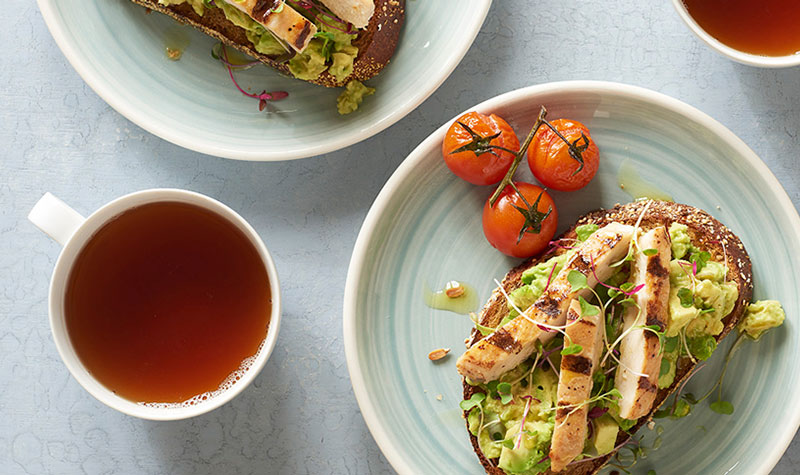How to Adapt to Today’s Top Healthy Dining Trends
Published on: 09/23/2019 in Culinary Trends, College & University
Published on: 09/23/2019 in Culinary Trends, College & University

When dining away from home, health-conscious consumers used to gravitate to low-fat, low-calorie and low-carb menu items. But today, fewer than 25 percent of consumers seek any of those descriptors when looking for healthy options.1 Notably, more than half (58 percent) say it’s difficult to eat healthy when dining out.1
Of course, while USDA and FDA regulate the term “healthy” on packaged foods, it is an ever-evolving term to consumers in context of dining choices. To appeal to consumers who prioritize healthy eating, stay current on what the label means to the majority of consumers and incorporate the ingredients, names and menu descriptions that press these on-trend “healthy” buttons.
Clean Labels
The clean-label movement sweeping the food industry incorporates such “feel-real” factors as all-natural and no preservatives, artificial additives, hormones or unnecessary antibiotics. In fact, the fewer ingredients, the better, and those used must be easily recognized and understood by consumers. Transparency by food distributors and operators assures consumers that these guidelines have been honored.
A significant 81 percent of health-conscious consumers say they care more about real ingredients than calories when dining away from home.1 Among the many free-from food product claims the industry makes, consumers consider hormone-free and antibiotic-free most important.2
Because consumers tend to scrutinize what is (and isn’t) in their poultry, distributors and operators should commit to sourcing clean products such as PERDUE® HARVESTLAND® Chicken and Turkey. PERDUE® HARVESTLAND® poultry stands apart because the animals are fed an all-vegetarian diet but aren’t given hormones, steroids or antibiotics and aren’t confined in cages.
Functional Foods
Perhaps somewhat surprisingly, 62 percent of surveyed consumers say general well-being motivates their desire to eat healthfully, compared to 47 percent who say they do so to lose weight.3 It’s therefore not surprising that functional foods with positive health attributes are more sought after than foods that minimize negatives (as in low-calorie, low-sugar and low-sodium). What’s more, half of surveyed consumers agree that high nutrient content is more important than “free-from” claims.2
Adding functional ingredients or superfoods has become an increasingly popular menu-development strategy. Including the word power in a dish’s name is one way to signal to diners that it contains superfoods.
Kalamazoo College in Kalamazoo, Michigan, for example, offers students a gorgeous Spring Pea and Kale Hummus Bowl with Quinoa—full of plant-based protein and two popular superfoods. Another Michigan school, the University of Michigan, is serving up a Squash and Grain Bowl using both quinoa and farro, and layered with grilled, seasoned zucchini.6
Protein
Today’s health-conscious consumers are keen on proteins—both animal- and plant-based varieties.
Plant-based protein shipments to foodservice outlets increased 20 percent in 2018, likely in response to the fact that 60 percent of consumers aim to cut down on meat consumption for reasons including health, weight management and even climate change.4 But that doesn’t mean distributors and operators should abandon animal proteins, which are rich in nutrients and offer satisfying taste and texture that are difficult to replicate.
In fact, chicken remains one of consumers’ most favored proteins. Some 40 percent of consumers have indicated they’re eating more chicken than they did in the prior year.5
For now, consumers focused on healthy dining choices are gravitating to clean labels, functional foods and protein. But their priorities are always subject to change. Evaluate and adjust your offerings and messaging to meet consumers’ evolving “healthy” criteria to remain relevant and keep consumers coming back.
Sources: